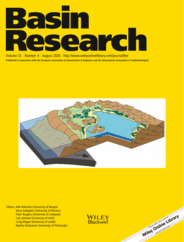
Full text loading...
Lacustrine rift basins commonly preserve a fairly complete record of the sediment source‐to‐sink (S2S) system, and consequently may form an ideal natural laboratory for establishing quantitative relationships between the various elements within the S2S system. The tectonic‐activity rate in the source (e.g., fault‐growth rate and fault‐activity rate), accommodation space and depositional system in the sink (e.g., areal extent and volume, as well as the depositional dip of the fan‐ and braid‐deltas) are genetically related and their quantitative correlations are explored. The Palaeogene succession on the southwestern margin of the Huanghekou Depressionin the Bohai Bay Basin, one of the largest lacustrine rift basins in eastern China, was chosen to study these relationships, using 3‐D seismic, core and well‐log data. The tectonic activity was strongly related to the sediment supply, accommodation space and morphology of the sink area. Three different rates of tectonic activity are identified; these led to changes in the basic features of the S2S system that influenced each other. In Members 4 and 3 (lower unit) of the Shahejie Fm. (40.44–44.7 Ma), strong tectonic activity led to significant uplift, resulting in the widest exposure of the provenance area to erosion, to a high sediment‐supply rate, to a steep slope and to a large accommodation space which controlled the development of several fan‐deltas with steep progradational angles. In Member 3 (upper unit) of Shahejie Fm. (37.89–40.44 Ma) and Member 3 of Dongying Fm. (30.2–33.28 Ma), decreased tectonic activity led to slower uplifting, resulting in a wider alluvial plain, longer transport distances, a lower sediment‐supply rate and less accommodation space, so that braid‐deltas with larger volumes and a gentler slope developed; In Members 1 and 2 of Shahejie Fm. (33.28–37.89 Ma) and Member 2 of Dongying Fm. (26.71–30.2 Ma), still further decreasing tectonic activity led to a still lower sediment‐supply rate, a more gentle depositional slope, less accommodation space, and the development of several braid‐deltas with a gentle angle. The quantitative relationships established here advance our understanding of the relationships within lacustrine source‐to‐sink systems, especially for tectonically controlled rift basins.

Article metrics loading...

Full text loading...
References


Data & Media loading...

